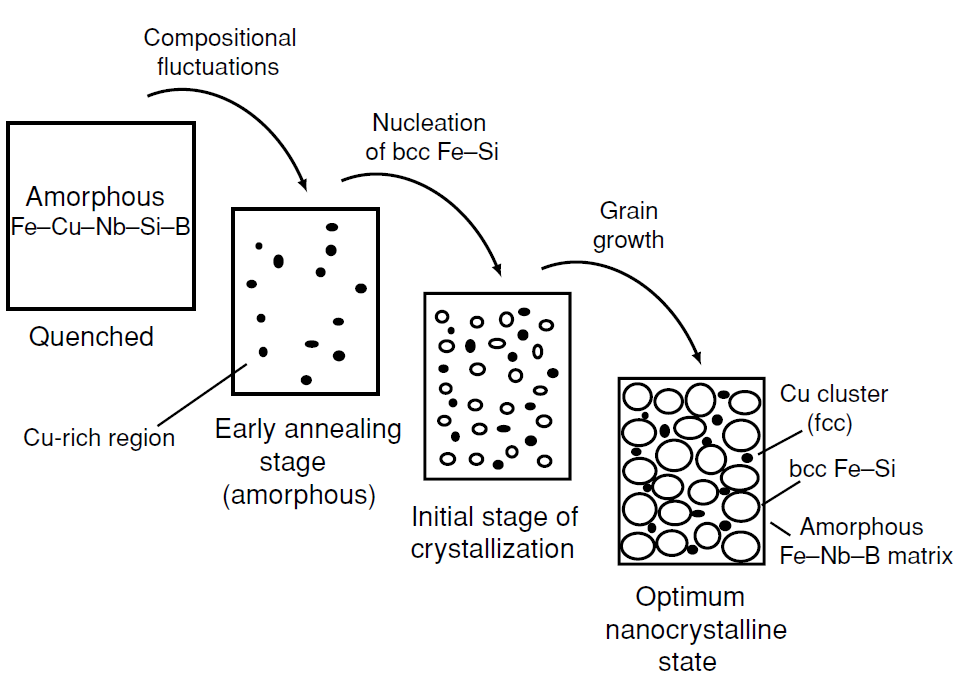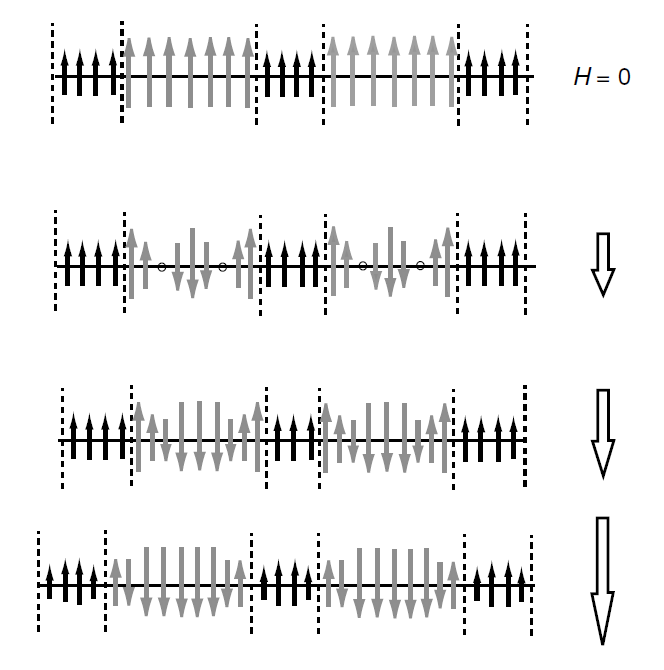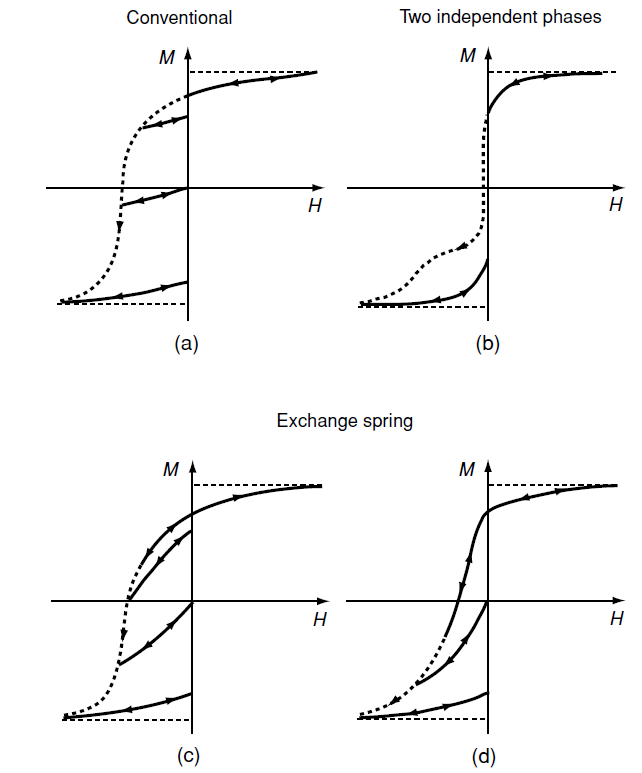
Two-phase nanostructures
 المؤلف:
J. M. D. COEY
المؤلف:
J. M. D. COEY
 المصدر:
Magnetism and Magnetic Materials
المصدر:
Magnetism and Magnetic Materials
 الجزء والصفحة:
301
الجزء والصفحة:
301
 1-3-2021
1-3-2021
 3191
3191
Two-phase nanostructures
Two-phase amorphous–crystalline structures may be obtained by partial recrystallization of an amorphous precursor, Fig. 1. If υc is the volume fraction of the crystalline phase which has anisotropy K1 and the amorphous phase is assumed to have no anisotropy, then it follows from the argument leading to that

The great interest of these two-phase soft nanostructures is that the two phases may have opposite sign of magnetostriction, λs . The composition is chosen so that volume fractions of the two phases make 〈λs〉 = 0 as required for a good soft material. The crystalline fraction may have a larger magnetization than the amorphous one, so zero magnetostriction can be combined with high magnetization. An example is ‘Finemet’, Fe73.5Cu1Nb3Si15.5B7.
Exchange-coupled hard–soft nanocomposites are another possibility. Here δw is too small to average the effective anisotropy to zero, but by exchange coupling to a soft phase with higher magnetization than the hard phase, it is possible to augment the remanence, achieving greater isotropic remanence than would be possible from the hard phase alone (μ0Ms for

Figure 1: Recrystallization of amorphous Fe–Cu–Nb–Si–B to obtain a two-phase crystalline–amorphous soft nanocomposite. R. C.
Nd2Fe14B, Fe and Fe70Co30 is 1.61, 2.15 and 2.45 T, respectively). In twophase hard–soft nanostructures, exchange stiffening leads to ‘spring magnet’ behaviour, illustrated in Fig 2. The hysteresis is illustrated in Fig. 3. In any such two-phase nanocomposite there is an inevitable trade-off between remanence and coercivity. This is illustrated for the hard–soft Sm2Fe17N3–Fe nanocomposite in Fig. 4.

Figure 2: Kneller and Hawig’s idea of exchange coupling hard and soft regions in a two-phase spring magnet. The hard phase is represented by the black arrows, the soft phase by grey arrows.

Figure 3: Hysteresis behaviour of a spring magnet (a) optimized two-phase nanostructure, (b) overcoupled nanostructure, (c) hard phase alone and (d) constricted loop due to two independent phases.

Figure 4: Coercivity and remanence as a function of composition in a two-phase nanocomposite of Sm2Fe17N3/Fe. The crystallite size is about 20 nm.
 الاكثر قراءة في المغناطيسية
الاكثر قراءة في المغناطيسية
 اخر الاخبار
اخر الاخبار
اخبار العتبة العباسية المقدسة


